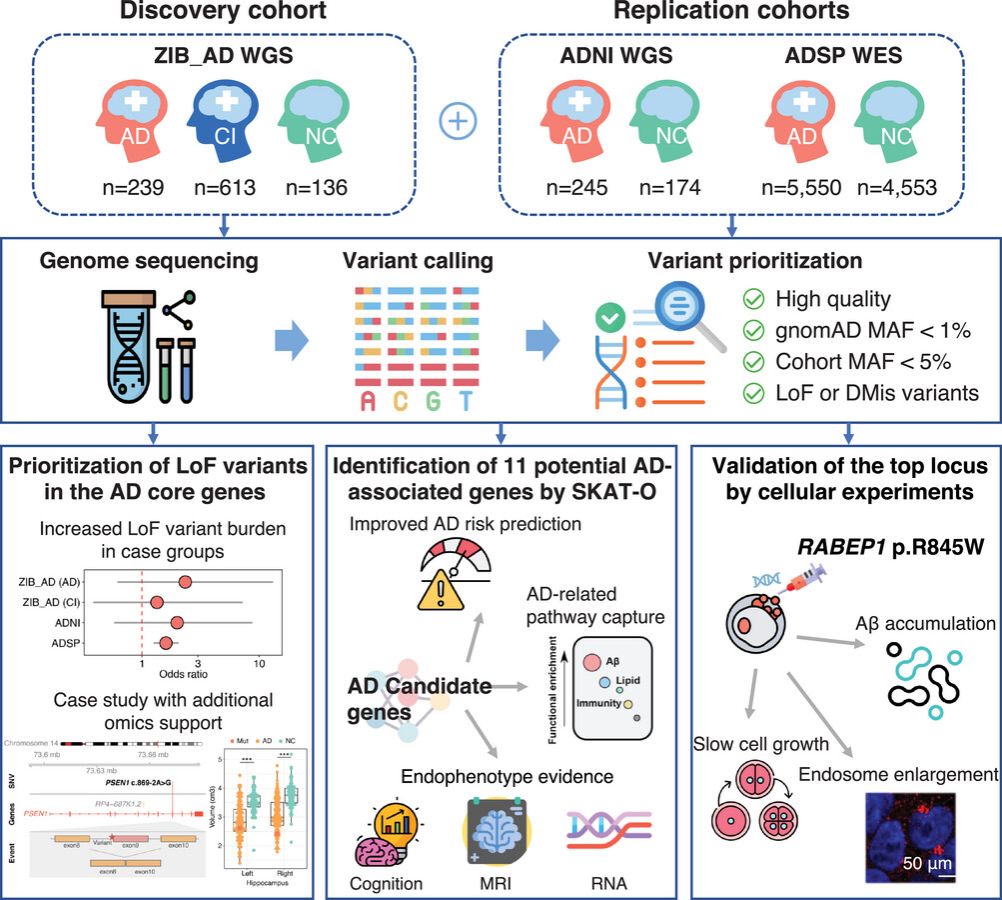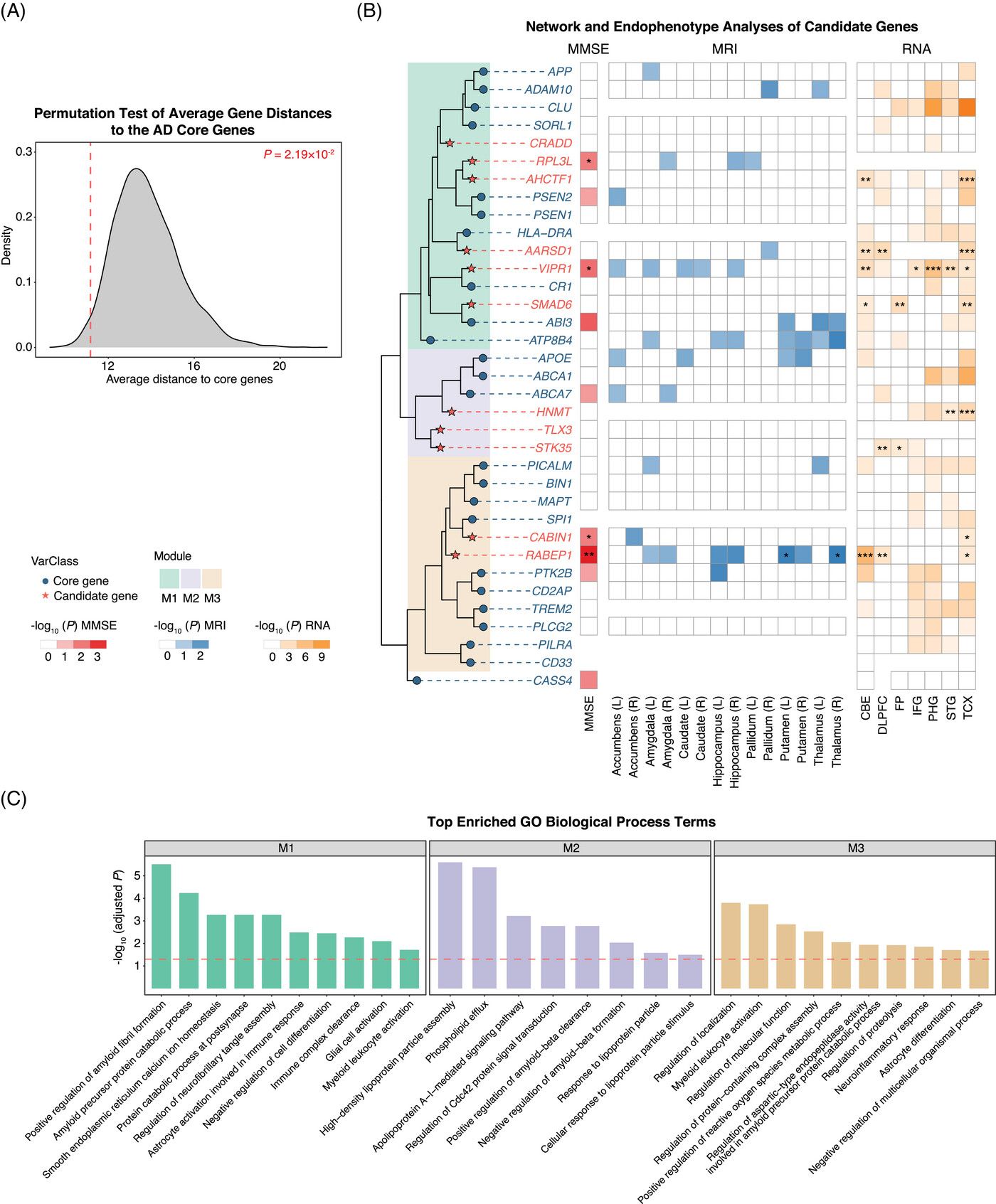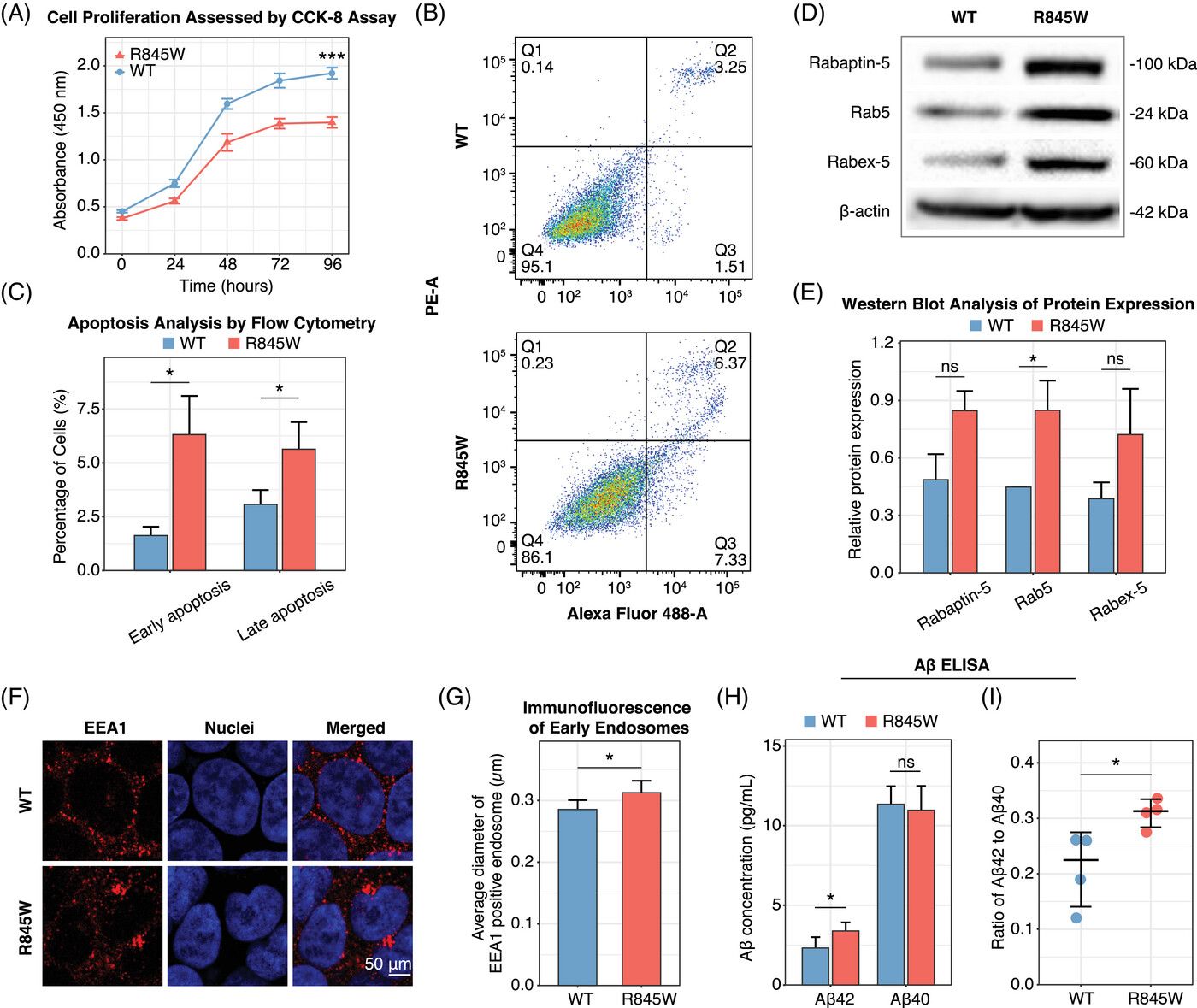INTRODUCTION: Increasing evidence has highlighted rare variants in Alzheimer'sdisease (AD). However, insufficient sample sizes, especially in underrepresented eth-nic groups, hinder their investigation. Additionally, their impact on endophenotypesremains largely unexplored.
METHODS: We prioritized rare likely-deleterious variants based on whole-genomesequencing data from a Chinese AD cohort (n = 988). Gene-based optimal sequencekernel association tests were conducted between AD cases and normal controlsto identify AD-related genes. Network clustering, endophenotype association, andcellular experiments were conducted to evaluate their functional consequences.
RESULTS: We identified 11 novel AD candidate genes, which captured AD-relatedpathways and enhanced AD risk prediction performance. Key genes (RABEP1, VIPR1,RPL3L, and CABIN1) were linked to cognitive decline and brain atrophy. Experimentsshowed RABEP1 p.R845W inducing endocytosis dysregulation and exacerbating toxicamyloid β accumulation, underscoring its therapeutic potential.
DISCUSSION: Our findings highlighted the contributions of rare variants to AD andprovided novel insights into AD therapeutics.
K E Y W O R D SAlzheimer's disease, biomarkers, rare variant, the endocytic pathway, whole-genome sequencing
Highlights∙ Identified 11 novel AD candidate genes in a Chinese AD cohort.∙ Correlated candidate genes with AD-related cognitive and brain imaging traits.∙ Indicated RABEP1 p.R845W as a critical AD contributor in the endocytic pathway.



paper link: https://alz-journals.onlinelibrary.wiley.com/doi/epdf/10.1002/alz.14444